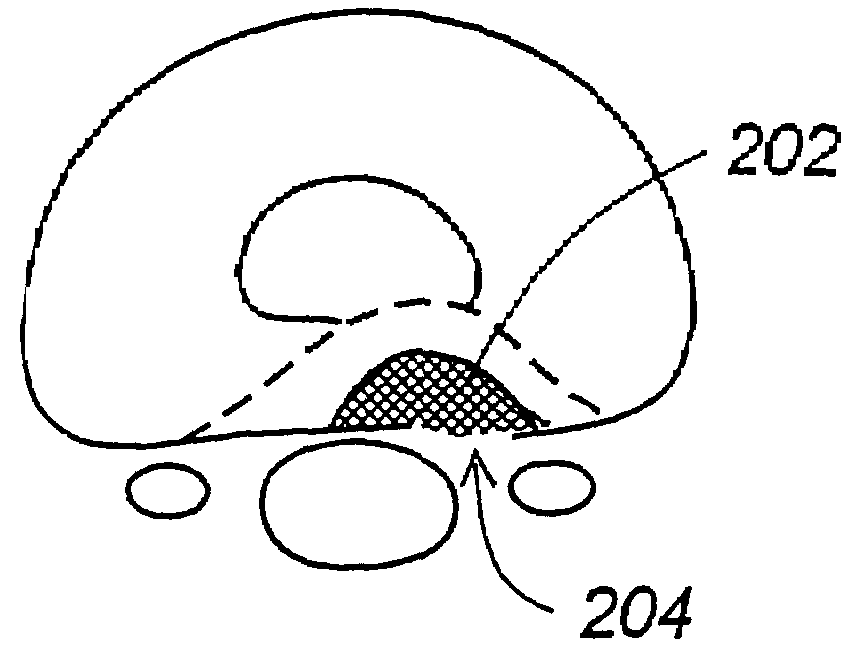Methods for treating a defect in the annulus fibrosis
- Summary
- Abstract
- Description
- Claims
- Application Information
AI Technical Summary
Benefits of technology
Problems solved by technology
Method used
Image
Examples
Embodiment Construction
[0076]Having discussed the problems associated with post-operative partial discectomy with respect to FIGS. 1A-1C, reference will now be made to FIG. 2, which illustrates a preferred embodiment of the invention, wherein a device in the form of a stent 202 is used to occlude a defect 204 in a human disc, as shown. In this preferred embodiment, the device is composed of a flexible material, which may be cloth, polymeric or metallic. For reasons discussed below, a titanium mesh screen is preferred with respect to this embodiment of the invention.
[0077]A flexible device is also preferred because the surgeon is presented with a very small working area. The incision through the skin is typically on the order of 1 to 1.5 inches in length, and the space at the disc level is approximately 1 centimeter on the side. As a consequence, the inventive device and the tools associated with insertion and fixation described below must be sufficiently narrow to fit within these confines.
[0078]As shown ...
PUM
| Property | Measurement | Unit |
|---|---|---|
| Size | aaaaa | aaaaa |
| Shape | aaaaa | aaaaa |
| Defects | aaaaa | aaaaa |
Abstract
Description
Claims
Application Information
 Login to View More
Login to View More - R&D
- Intellectual Property
- Life Sciences
- Materials
- Tech Scout
- Unparalleled Data Quality
- Higher Quality Content
- 60% Fewer Hallucinations
Browse by: Latest US Patents, China's latest patents, Technical Efficacy Thesaurus, Application Domain, Technology Topic, Popular Technical Reports.
© 2025 PatSnap. All rights reserved.Legal|Privacy policy|Modern Slavery Act Transparency Statement|Sitemap|About US| Contact US: help@patsnap.com



